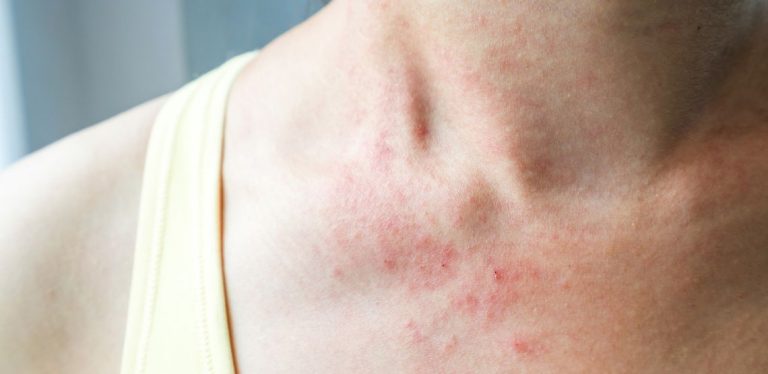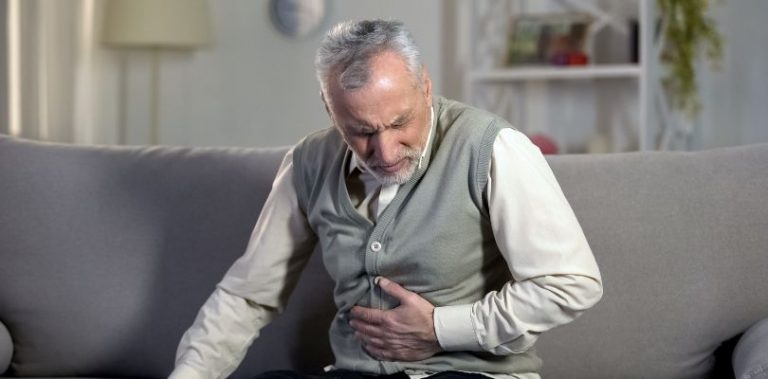What is Hidradenitis Suppurativa?
Hidradenitis suppurativa is a chronic skin condition that presents with small painful lumps under the skin. This condition develops when hair follicles in the skin become blocked and sometimes when the apocrine glands (sweat glands) become inflamed. The change in hormones triggered by puberty usually aligns with when hidradenitis suppurativa begins. These swollen lesions tend to affect areas where the skin rubs together—the armpits, groin, buttocks, and breast regions to name a few.
Hidradenitis suppurativa is a progressive disease, persisting for years and worsening as it develops. Over time, one lump may become clusters of lumps. The lumps may break open, leak, and begin to form tunnels under the skin. Cases of hidradenitis suppurativa range in sensitivity, but all cases require treatment and management.
Hidradenitis Suppurativa Symptoms
Every case of hidradenitis suppurativa depends on the individual and their unique symptoms. This skin condition can affect one spot on the body or multiple. Symptoms often appear during puberty or early adulthood and may include mild or more severe symptoms.
Mild symptoms include:
- Early symptoms, such as itching and discomfort
- Excess weight
- Stress
- Hormonal changes
More advanced symptoms include:
- Pea-size lumps in areas with hair follicles with many oil and sweat glands
- Abscesses that spontaneously rupture and leak a foul-smelling liquid made of pus and seropurulent (a clear fluid)
- Lumps that return after they rupture and heal
- Tunnels under the skin that form over time
- Painful reddish nodules
- Small, pitted areas with blackheads that are often in pairs
- Scar formation
- Pain when sitting or walking if lumps are located in areas like the groin
- Pain when reaching if lumps are located in areas like the armpits
- Impacts on emotional wellbeing
Pay attention to your body when new symptoms present. These symptoms may indicate a trigger flare-up potentially caused by many things, such as menstruation, heat or humidity, stress, perspiration, and more. Flare-ups may also point to a complication with the treatment you currently use.
Causes of Hidradenitis Suppurativa
The exact cause of hidradenitis suppurativa is unknown. Research indicates that this condition cannot be spread to other people. Experts attribute hidradenitis suppurativa to a few risk factors, including:
- Age: This condition typically occurs between ages 18 and 29.
- Sex: Women are more likely than men to develop hidradenitis suppurativa.
- Family history: It may be genetically inherited.
- Obesity: Research shows a link between being overweight and hidradenitis suppurativa.
- Smoking: There is a relationship between tobacco use and hidradenitis suppurativa.
Related Search Topics (Ads)
Hidradenitis Suppurativa Diagnostic Process
There is no laboratory test available to specifically diagnose hidradenitis suppurativa, which may lead to mistaken identification as a different condition. Due to hidradenitis suppurativa symptoms, it may be misdiagnosed as boils, infected hair follicles, and more. Without a proper diagnosis, patients may go without the care they need.
Instead of seeing their general practitioner, some patients choose to see a dermatologist, who are specialists in the treatment of hair and skin conditions. Your doctor makes a diagnosis based on a skin examination, your symptoms, medical history, and blood tests. Using ultrasonography of your hair follicles and the thickness of your skin, doctors can see abnormalities and get a sense of how hidradenitis suppurativa is progressing. They may also use other tests in the diagnostic process, including:
- C-reactive protein assay
- Urinalysis
- Serum IL-2 receptor levels assessment of the erythrocyte sedimentation rate
- Complete blood count with differential and platelet counts
Treatment Options
Unfortunately, hidradenitis suppurativa cannot be cured, but it can be treated to manage symptoms. Patients are all different and how they respond to treatment is unique to them. Your treatment is tailored to your specific case and the severity of hidradenitis suppurativa.
Unfortunately, no single treatment has been proven completely reliable but should help minimize your symptoms and discomfort. Based on your diagnosis, home remedies may help mild cases, or your doctor will suggest medication, surgery, or both to manage your symptoms and prevent complications.
Home remedies:
- Using a warm compress
- Practicing good hygiene
- Using antibacterial soaps, antiseptics, or over the counter anti-inflammatory medication
- Wearing loose-fitting clothing
- Maintaining a healthy weight
- Not smoking
Medications
Doctors may recommend antibiotics, oral retinoid medication, anti-inflammatory drugs, corticosteroids, hormones, and tumor necrosis factor-alpha inhibitors:
- Mild cases may be prescribed antibiotic creams to fight infections, such as clindamycin and gentamicin.
- Widespread disease may warrant systemic drugs, like rifampin or doxycycline.
- Severe cases may be prescribed an injection of adalimumab.
Surgery
There are a few different surgeries that doctors may suggest based on the severity of hidradenitis suppurativa:
- Punch debridement to remove a single nodule
- Carbon dioxide laser therapy to remove lesions
- Removing skin tissue to expose the tunnels under the skin
- Removal of damaged tissue with electrosurgical peeling
- Skin grafts to close the wound following a surgery that removes affected skin
Other treatments that have shown some benefit with hidradenitis suppurativa symptoms are laser hair removal and radiation therapy. Currently, additional interventions being studied are topical antiseptics, new biological therapies, and further study of adalimumab.
A condition that starts with a single painful lump does not need to get out of control. With an accurate diagnosis and medical treatment, you can prevent hidradenitis suppurativa from worsening. Treating symptoms early helps you relieve pain, heal non-healing wounds, and treat an infection without interruption to your daily life.

